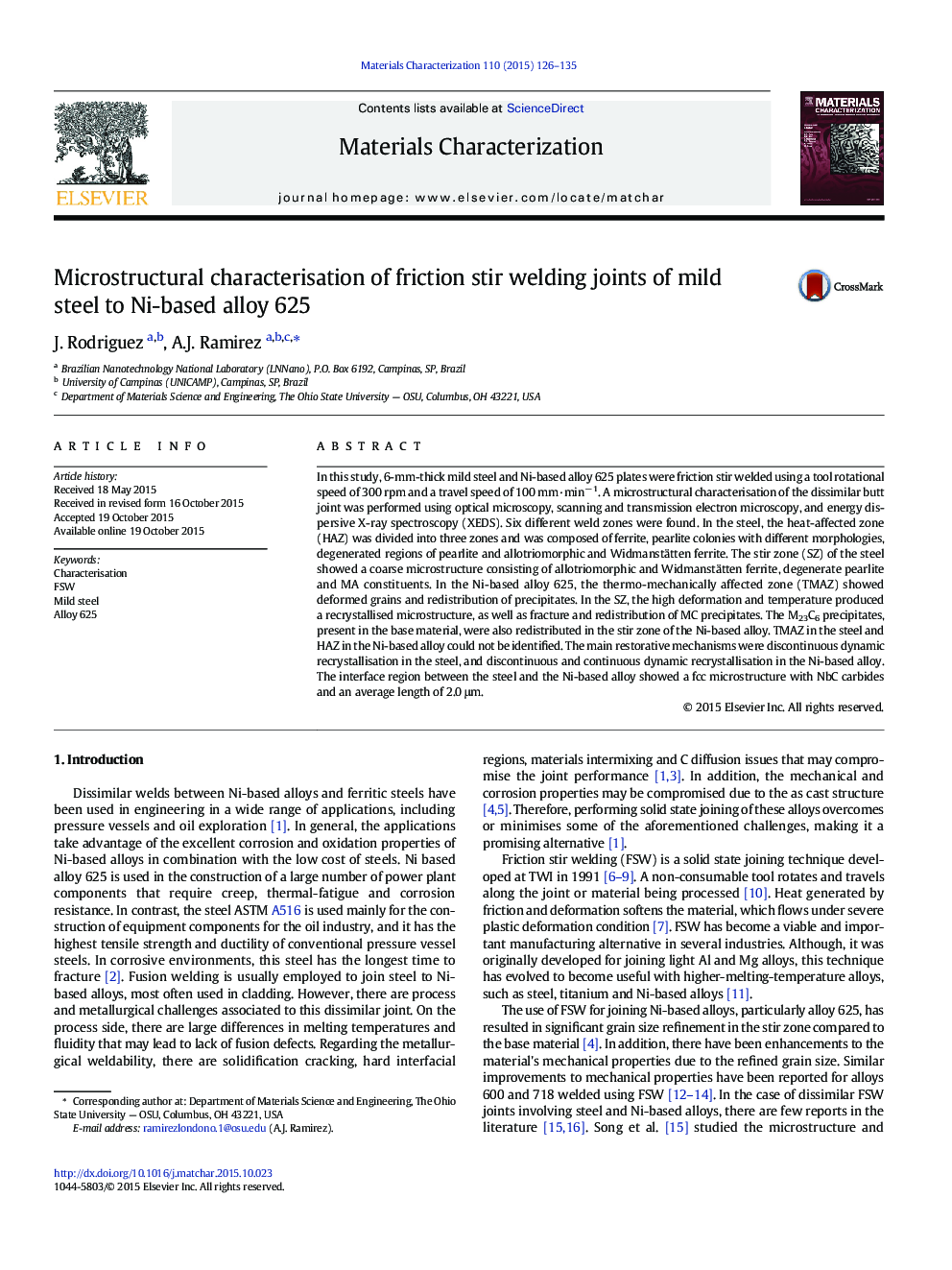| کد مقاله | کد نشریه | سال انتشار | مقاله انگلیسی | نسخه تمام متن |
|---|---|---|---|---|
| 1570693 | 1514377 | 2015 | 10 صفحه PDF | دانلود رایگان |
• Comprehensive microstructural characterisation of dissimilar joints of mild steel to Ni-based alloy
• Friction stir welding of joints of mild steel to Ni-based alloy 625 produces sound welds.
• The interface region showed deformed and recrystallised fcc grains with NbC carbides and a length of 2.0 μm.
In this study, 6-mm-thick mild steel and Ni-based alloy 625 plates were friction stir welded using a tool rotational speed of 300 rpm and a travel speed of 100 mm·min− 1. A microstructural characterisation of the dissimilar butt joint was performed using optical microscopy, scanning and transmission electron microscopy, and energy dispersive X-ray spectroscopy (XEDS). Six different weld zones were found. In the steel, the heat-affected zone (HAZ) was divided into three zones and was composed of ferrite, pearlite colonies with different morphologies, degenerated regions of pearlite and allotriomorphic and Widmanstätten ferrite. The stir zone (SZ) of the steel showed a coarse microstructure consisting of allotriomorphic and Widmanstätten ferrite, degenerate pearlite and MA constituents. In the Ni-based alloy 625, the thermo-mechanically affected zone (TMAZ) showed deformed grains and redistribution of precipitates. In the SZ, the high deformation and temperature produced a recrystallised microstructure, as well as fracture and redistribution of MC precipitates. The M23C6 precipitates, present in the base material, were also redistributed in the stir zone of the Ni-based alloy. TMAZ in the steel and HAZ in the Ni-based alloy could not be identified. The main restorative mechanisms were discontinuous dynamic recrystallisation in the steel, and discontinuous and continuous dynamic recrystallisation in the Ni-based alloy. The interface region between the steel and the Ni-based alloy showed a fcc microstructure with NbC carbides and an average length of 2.0 μm.
Figure optionsDownload as PowerPoint slide
Journal: Materials Characterization - Volume 110, December 2015, Pages 126–135
